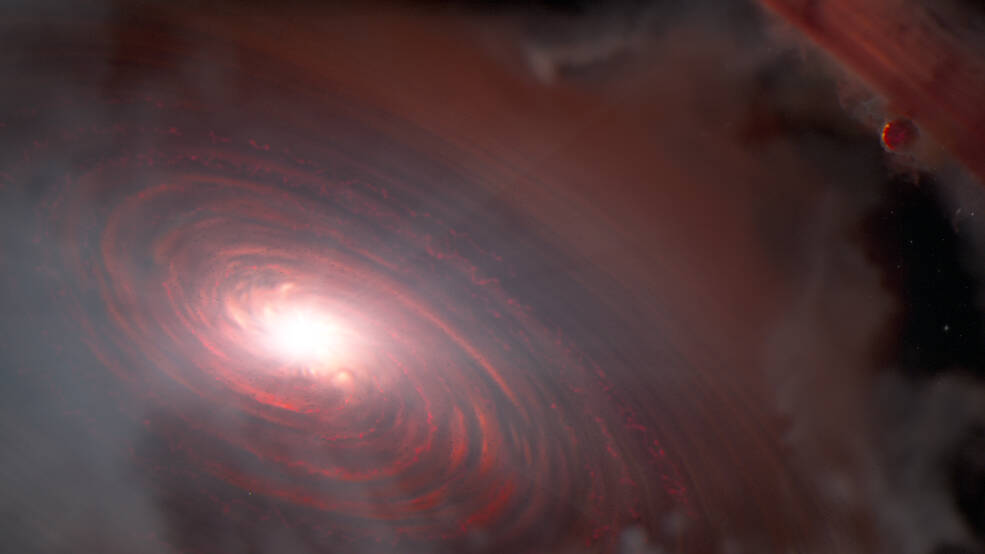PDS 70 is a K-type star, cooler than Sun and hosts both an inner disk and outer disk of gas and dust, separated by a 8 billion kilometre gap, and within that gap are two known gas-giant planets.
Webb’s MIRI (Mid-Infrared Instrument) detected the presence of water in the inner disk of the system, at distances of less than 160 million kilometres from the star — the region where rocky, terrestrial planets may be forming.
This is the first detection of water in the terrestrial region of a disk already known to host two or more protoplanets, said researchers in the paper published in the journal Nature.
“We’ve seen water in other disks, but not so close in and in a system where planets are currently assembling. We couldn’t make this type of measurement before Webb,” said lead author Giulia Perotti of the Max Planck Institute for Astronomy (MPIA) in Heidelberg, Germany.
“This discovery is extremely exciting, as it probes the region where rocky planets similar to Earth typically form,” added MPIA director Thomas Henning, a co-author on the paper.
PDS 70 is estimated to be 5.4 million years old. This is relatively old in terms of stars with planet-forming disks, which made the discovery of water vapour surprising.
Astronomers haven’t yet detected any planets forming within the inner disk of PDS 70. However, they do see the raw materials for building rocky worlds in the form of silicates.
The detection of water vapour implies that if rocky planets are forming there, they will have water available to them from the beginning.
The origin of water is also not clear. The team aims to use two more of Webb’s instruments, NIRCam (Near-Infrared Camera) and NIRSpec (Near-Infrared Spectrograph) to study the PDS 70 system in an effort to glean an even greater understanding.
Webb is an international programme led by NASA with its partners, ESA (European Space Agency) and the Canadian Space Agency.
–IANS
rvt/uk
